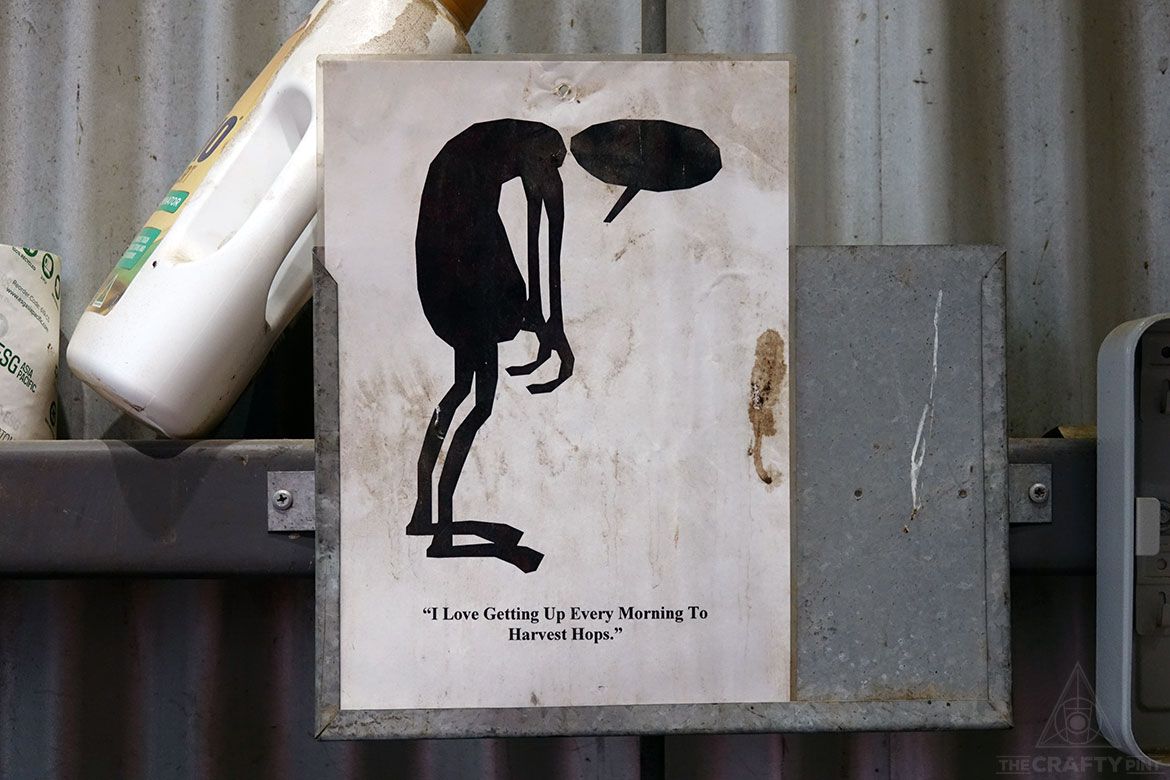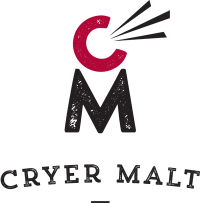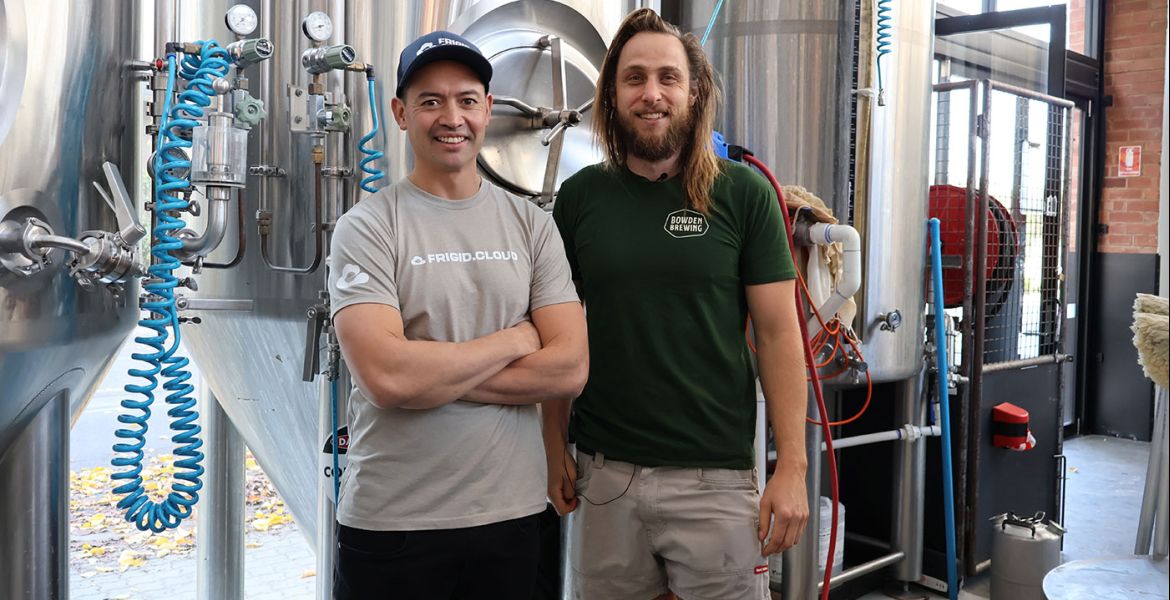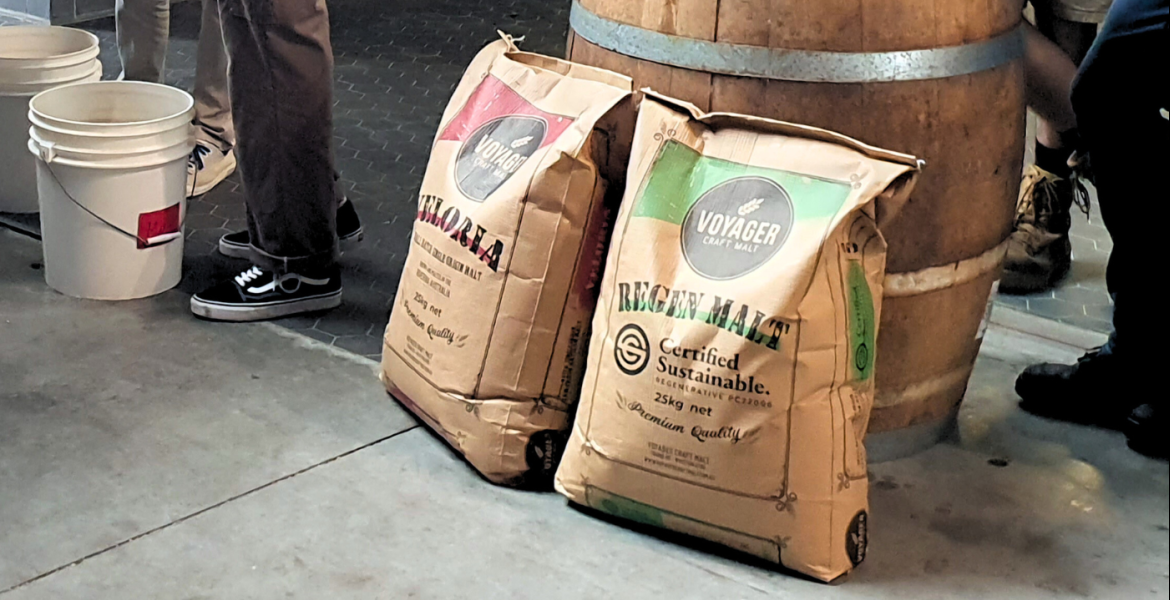Following the Southern Hemisphere hop harvest, Australia's largest hop grower, Hop Products Australia (HPA), has released its annual crop report, detailing the makeup of the output from the 847 hectares harvested across their Victorian and Tasmanian farms.
The 2023 harvest saw the yield for four out of six of their proprietary varieties increase, most notably with Eclipse. The hop – known for the distinctive mandarin qualities it can add to beers – was officially added to their lineup in 2020 after years in brewers' hands under the HPA-016 label; having found favour since then, HPA produced 70 percent more than last year.
In total, they picked 1,821 tonnes of hops: a 37 hectare (4.5 percent) net increase and a 164 tonne (9.9 percent) increase on the 2022 crop. In a media release (see below), HPA said some of the 2023 crop would be reserved for their new Victorian production facility announced last year, which will effectively double their processing capacity.
We asked HPA's head of sales and marketing Owen "OJ" Johnston about the latest harvest, the wider world of hops, what's on the horizon, and what it means for brewers and drinkers.
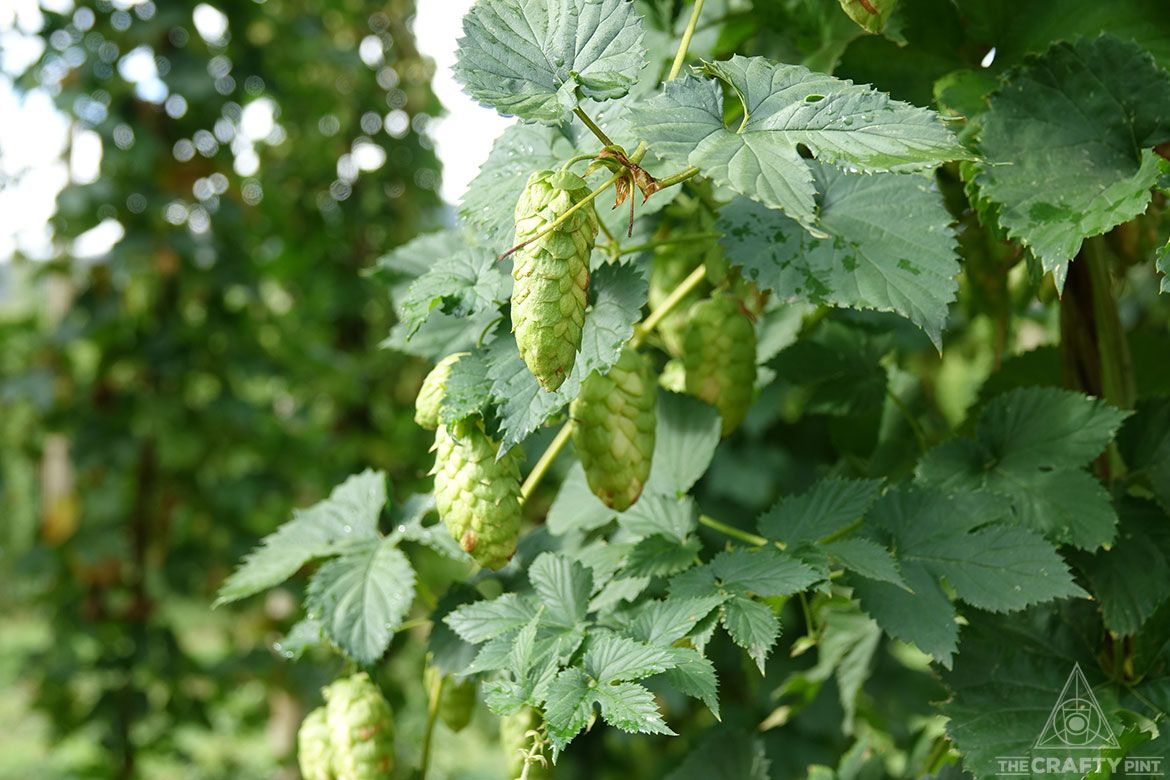
A 70 percent growth in Eclipse is huge and means a lot more of your newest hop; what's the demand from brewers like?
It is a lot! We’re executing a planned strategy that has seen Eclipse become our third biggest hop just three years after commercialisation. That strategy is backed by strong demand from hundreds of brewers around the world who find Eclipse easy to use in a range of beer styles.
We believe this is driven by that fact that it does exactly what it says on the label: it's bursting with sweet mandarin, zesty citrus peel and fresh pine needle flavours.
We send around 50 percent of Eclipse overseas, which is a similar percentage to our other hops. In the coming years, this percentage will be led by demand. If Aussie brewers need it, we’ll make it available.
It's been quite a few years since brewers could tour the hop fields. What was it like showing people around the Tassie and Victorian farms again?
Being unable to welcome brewers on farm for so long was tougher than expected. We really missed seeing the sense of enjoyment they get from being among the bines, following the hops they know and love from the field through each step of the production process. That experience creates a really strong sense of connection between grower and brewer, and hops and beer.
It was unreal to be able to host harvest tours again this year, particularly for the first-time visitors who were blown away by the sheer scale, sights, sounds, and aromas.
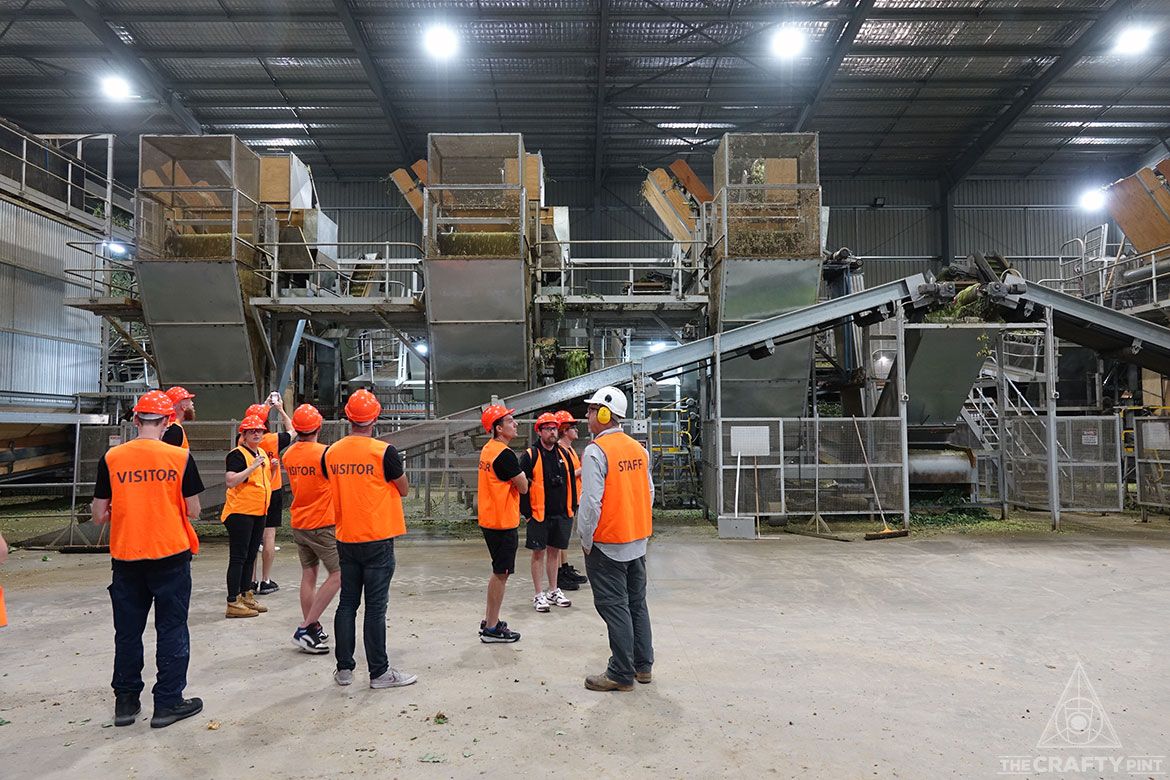
There's a lot of news out of America about an oversupply of hops; are there any concerns of a glut in Australia? Or is there a worry HPA's crop will be less in demand with so much availability from elsewhere?
On a global scale, our Aussie hops are very small and relatively well-balanced in terms of supply and demand. Even with this year’s increase in production volume, our forward contracts will only allow for a very limited amount available on the spot market.
We’re quietly confident that our Aussie hops' impact in beer will somewhat protect them from the oversupply of other hops.
What about your experimental varieties? Are there any among the latest crop we saw at Rostrevor that are exciting the team? And any that brewers will have access to play with in the near future?
Our breeding program is continually generating new hops. The leading cohort of experimental varieties occupy different harvest windows, have diverse genetic backgrounds, and in-field sensory feedback from brewers over hop harvest was positive across the group – which didn’t exactly help in identifying a front-runner!
This means our next commercial variety could impart estery tropical fruit, lime and guava, lemon curd, creamy mango, or ginger and saffron flavours in beer. Unfortunately, we can’t say which one it will be or when exactly that might be.
Currently, quantities of these experimental varieties are very small, but we’re hoping to improve brewers’ access in 2024.
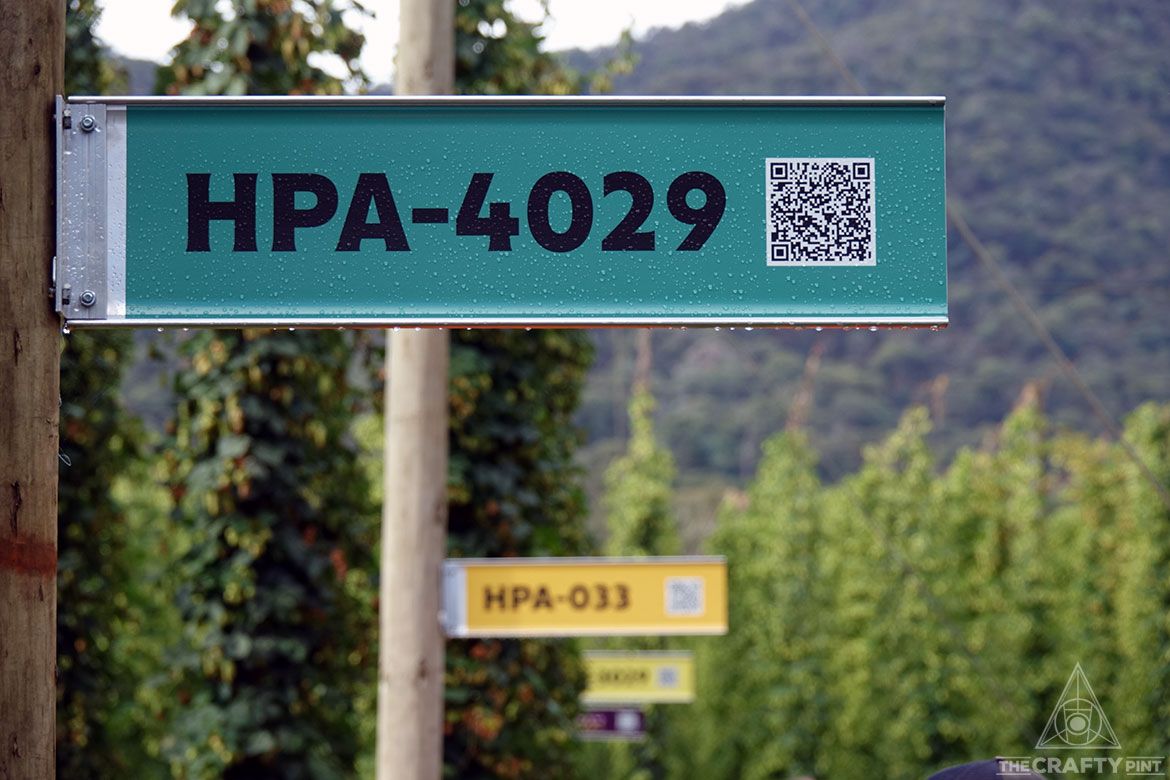
Media Release: Eclipse® is on the rise
Hop Products Australia (HPA) have completed this year’s hop harvest. They picked 847 hectares across Victoria and Tasmania, which resulted in 1,821 tonnes of hops. This was a 37 hectare (4.5%) net increase and a 164 tonne (9.9%) net increase year-on-year across six proprietary varieties – Eclipse®, Ella™, Enigma®, Galaxy®, Topaz™ and Vic Secret™ - as well as Cascade.
Oil content came in equal or above the 5-year average for all proprietary hops. HPA’s Head of Sales & Marketing Owen Johnston said “Eclipse had a particularly strong showing that should lead to an exceptional year of performance in beer.”
The final hectares of their recent Victorian expansion are now reaching commercial maturity, but some plants were significantly impacted by a third consecutive La Niña weather pattern.
“Despite adverse growing conditions we were able to modify our calendar of inputs accordingly, with the warm and dry summer aiding cone maturation.” said Mr Johnston.
A portion of this year’s crop will be reserved for commissioning their new production facility in Victoria. The modern temperature-controlled pellet plant and form, fill and seal packaging line will produce in excess of 50 tonnes of pellets per day. “This will allow us to double our current processing capacity while retaining higher average oils in the finished pellets at a lower average HSI.” continued Mr Johnston. This means brewers can expect an increase in quality, a reduced spread of analytical data, and more consistent performance in beer.
HPA is focussed on a sustainable future of quality beer, completing the initial Life Cycle Analysis (LCA) of their business to identify key areas and realistic targets to support the implementation of low emission practices that will improve their brewing customers’ indirect emissions moving forward.
Mr Johnston said “the hop and brewing world is going through a significant realignment of supply and demand as brewers endure some of the toughest years on record, but the outlook for Aussie hops remains steady.” Crop 2023 is heavily contracted, with a very limited amount available on the spot market.
